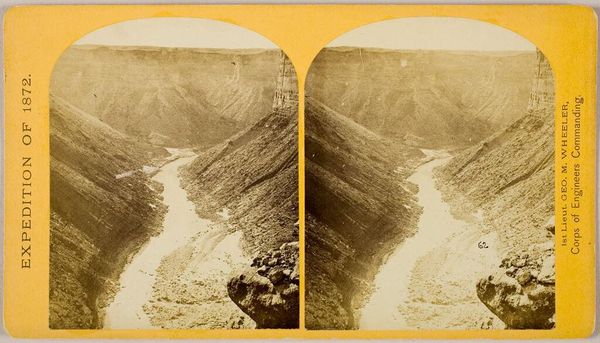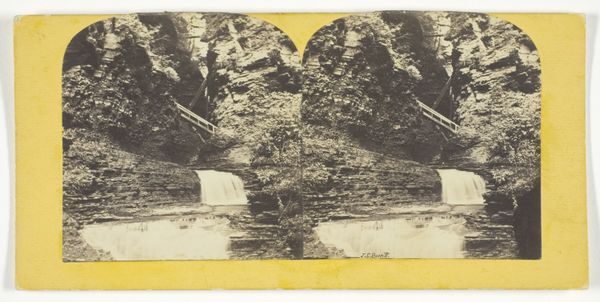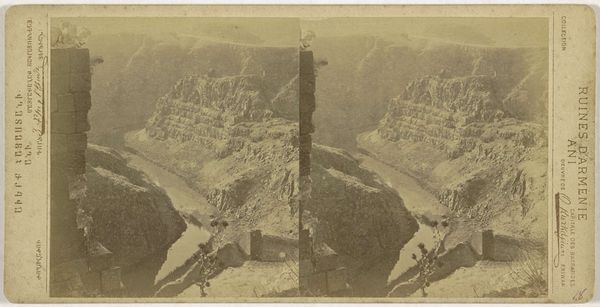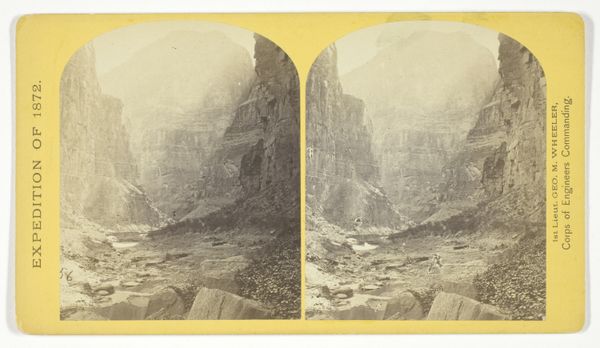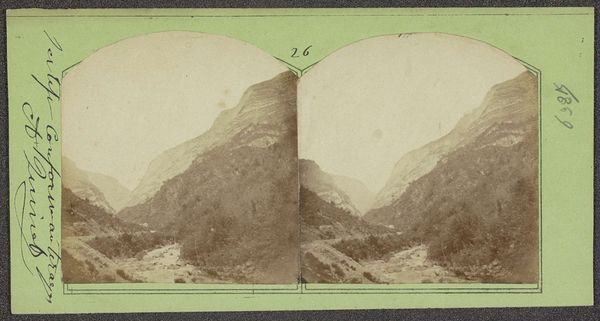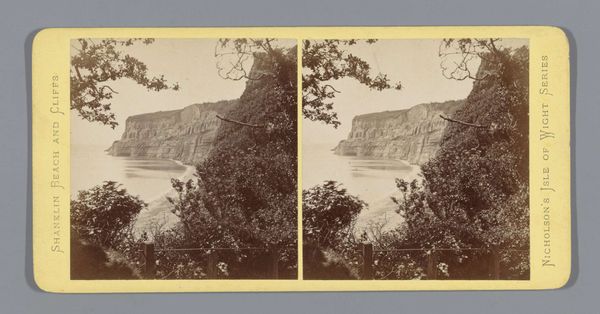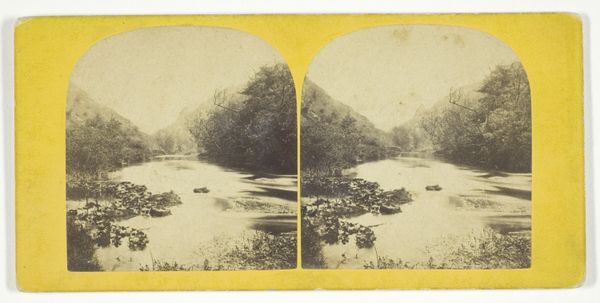
Marble Cañon, one of the gorges of the Colorado here, 1.200 feet deep. The steep cliff is gray limestone and the slope below a brilliant red sandstone. 1872
0:00
0:00
plein-air, photography, gelatin-silver-print
#
plein-air
#
landscape
#
photography
#
gelatin-silver-print
#
hudson-river-school
Dimensions: 9.3 × 7.4 cm (each image); 10 × 17.7 cm (card)
Copyright: Public Domain
Curator: This gelatin silver print, taken en plein-air, offers a striking view of Marble Cañon, captured by William Bell in 1872. The stark, almost monochrome palette gives it an air of austere grandeur. Editor: It feels oppressive, actually. That narrow band of light cutting through the gorge seems less like hope and more like an accusation, given the context of Manifest Destiny during this period. Curator: Interesting. I see it more as a testament to the sublime power of nature. Look at the way Bell captures the depth of the cañon – he indicates that it's approximately 1,200 feet deep. The contrasting textures of the gray limestone and red sandstone create this very tangible sense of scale and raw geologic force. Editor: And what was that force used for? This photograph, created under the command of the Corps of Engineers, isn't just an artistic rendering. It’s documentation of “untamed” land, meant to serve expansionist policies. This imagery directly enabled the exploitation and erasure of Indigenous peoples who called that canyon home. It reduces their complex history to the brutal simplicity of geological features to be measured and “conquered”. Curator: That’s a powerful reading. While I don't dispute the historical context, I'm drawn to the timeless qualities within the composition itself. The way the light etches the rock formations creates a captivating drama and grandeur. Editor: But grandeur at what cost? That’s the question the image forces me to ask. Even the very format speaks volumes – the double image emphasizes ideas of duplication and the perception of controlling territory. This image becomes a record less about nature and more about the instrumentalization of vision during a violent, ongoing colonialism. Curator: So you are suggesting this photo itself embodies the gaze and mentality of colonialism and conquest? Editor: Absolutely. The ‘scientific’ objectivity it implies masks the violence it facilitates. How can we celebrate beauty without interrogating who it served, and whom it continues to silence? Curator: I appreciate how you bring this layered critique. Looking beyond its formal achievements and contextualizing its historical implications gives me a very complex new awareness. Editor: And for me, analyzing it politically enriches my emotional reaction by focusing on its relationship to the real people of that era and the legacy of their marginalization that continues today.
Comments
No comments
Be the first to comment and join the conversation on the ultimate creative platform.
